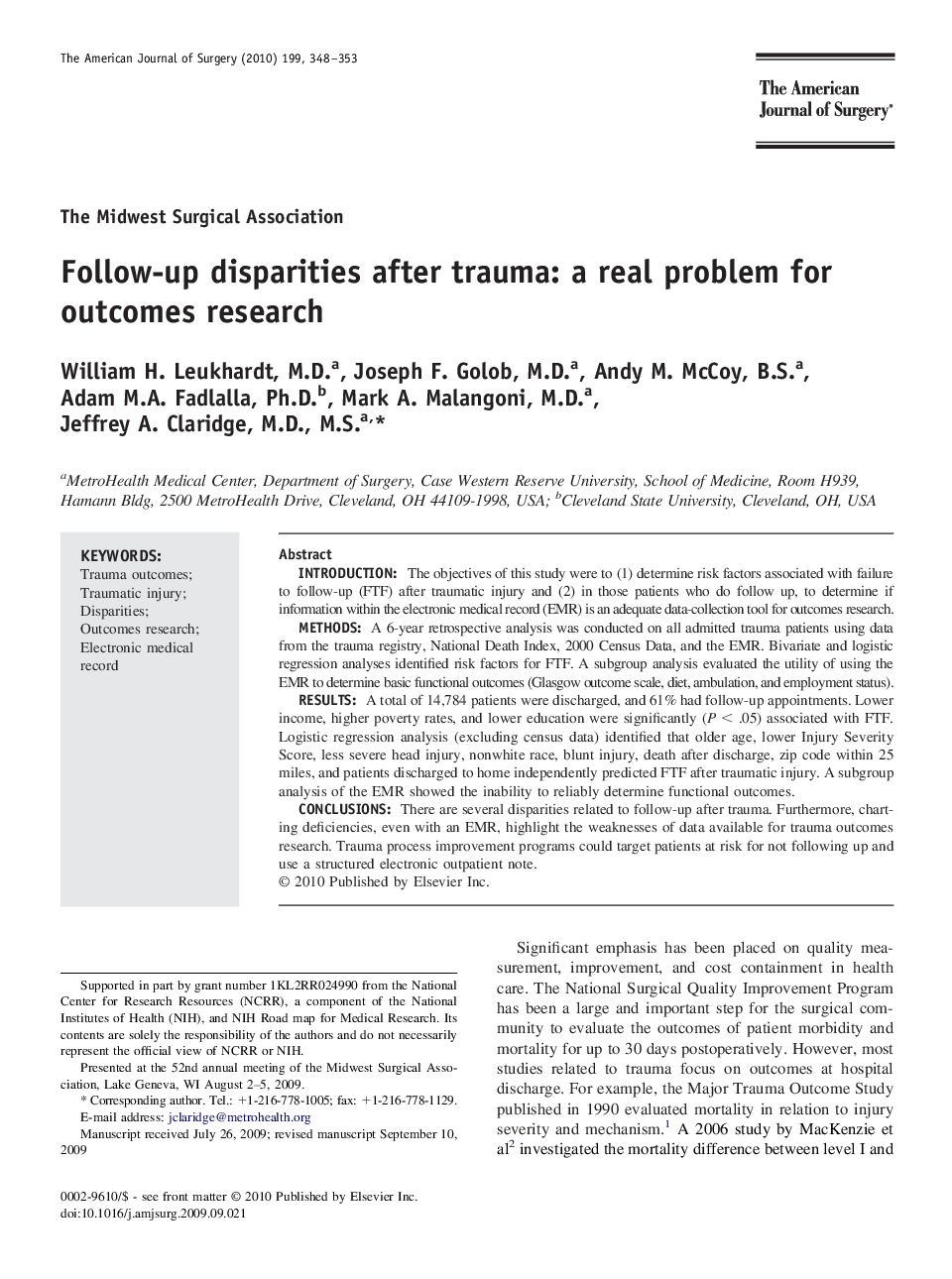| کد مقاله | کد نشریه | سال انتشار | مقاله انگلیسی | نسخه تمام متن |
|---|---|---|---|---|
| 4280607 | 1611557 | 2010 | 6 صفحه PDF | دانلود رایگان |

IntroductionThe objectives of this study were to (1) determine risk factors associated with failure to follow-up (FTF) after traumatic injury and (2) in those patients who do follow up, to determine if information within the electronic medical record (EMR) is an adequate data-collection tool for outcomes research.MethodsA 6-year retrospective analysis was conducted on all admitted trauma patients using data from the trauma registry, National Death Index, 2000 Census Data, and the EMR. Bivariate and logistic regression analyses identified risk factors for FTF. A subgroup analysis evaluated the utility of using the EMR to determine basic functional outcomes (Glasgow outcome scale, diet, ambulation, and employment status).ResultsA total of 14,784 patients were discharged, and 61% had follow-up appointments. Lower income, higher poverty rates, and lower education were significantly (P < .05) associated with FTF. Logistic regression analysis (excluding census data) identified that older age, lower Injury Severity Score, less severe head injury, nonwhite race, blunt injury, death after discharge, zip code within 25 miles, and patients discharged to home independently predicted FTF after traumatic injury. A subgroup analysis of the EMR showed the inability to reliably determine functional outcomes.ConclusionsThere are several disparities related to follow-up after trauma. Furthermore, charting deficiencies, even with an EMR, highlight the weaknesses of data available for trauma outcomes research. Trauma process improvement programs could target patients at risk for not following up and use a structured electronic outpatient note.
Journal: The American Journal of Surgery - Volume 199, Issue 3, March 2010, Pages 348–353